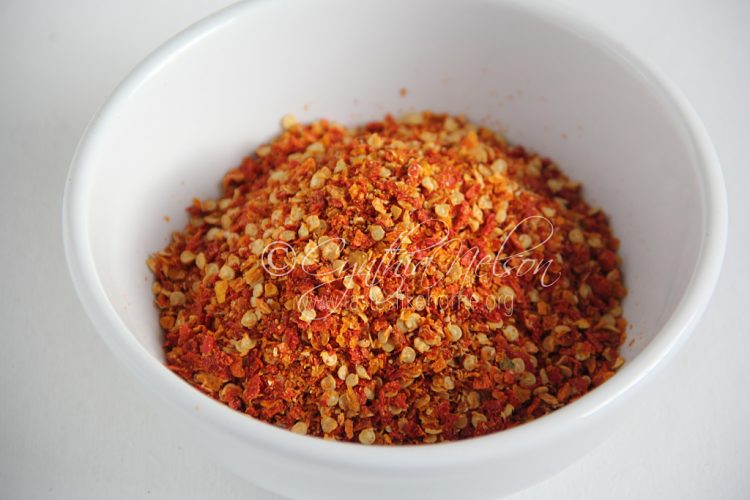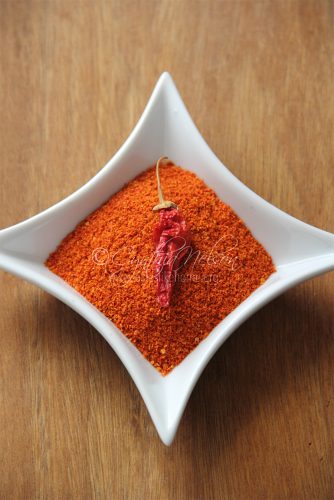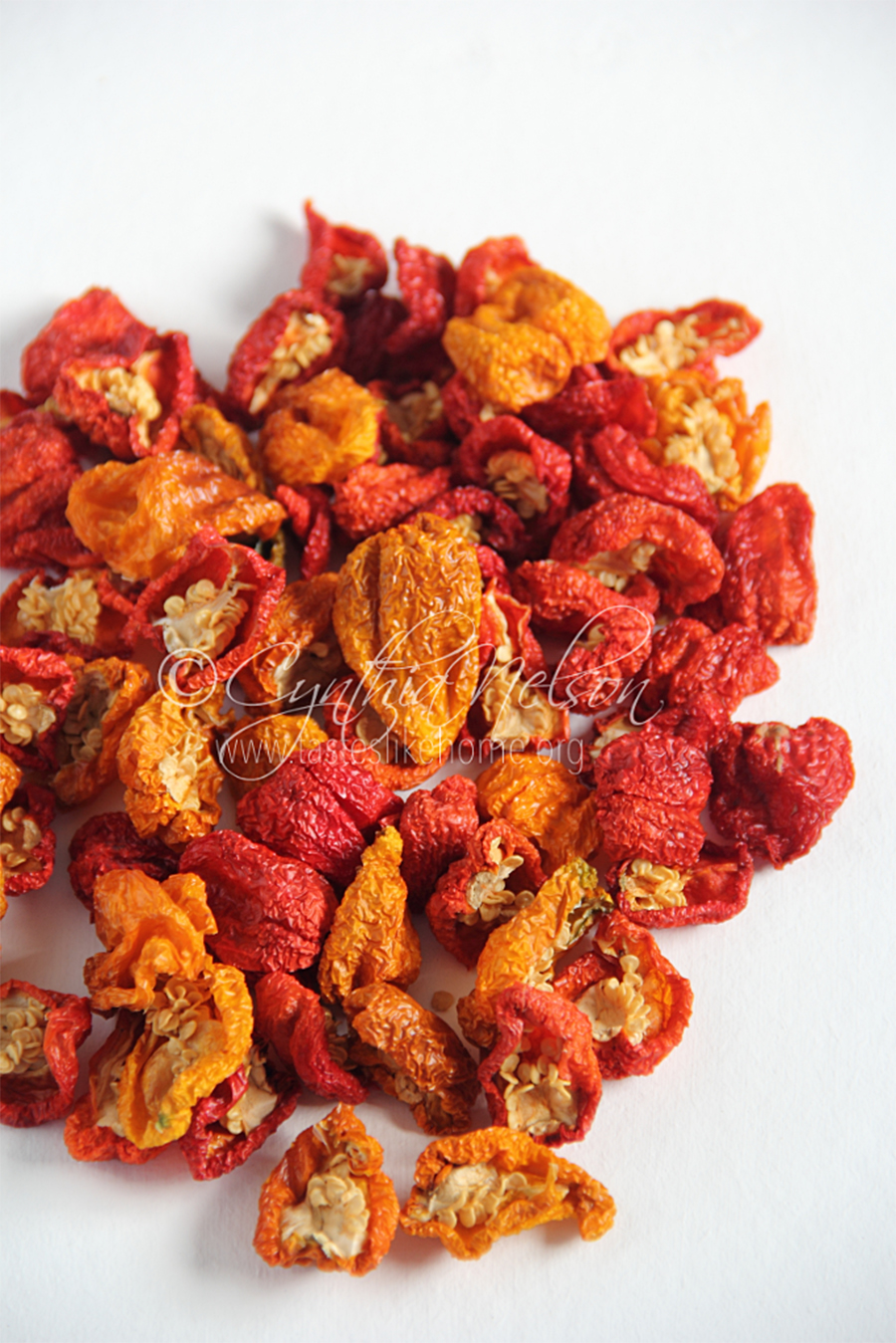
Each year, as certain things come into season, I set, pickle, pack and freeze for various uses. For example, with tomatoes now selling at BDS$8 – $9 per pound, I do not have to worry my head because when they were plentiful, I dried some; I roasted some, and I made a sauce with several pounds. This year, limes have been scarce but I still have some that I had preserved from a year ago. One of my favourite things to dry and preserve is hot peppers. We get quite a variety here so I dry them leaving some whole, turn them into flakes, powder, and of course making them into pepper sauce. I also make hot sauce – hot peppers cooked with tomatoes, onions, garlic and celery. I use hot sauce on almost everything. It’s hot but not as fiery as pure pepper sauce. I have had some ghost pepper, pepper sauce, for a few years now that I approach with a lot of respect and extreme caution (lol).

Back to the drying of the peppers. Growing up, I used to see one of our neighbours cutting the big peppers (scotch bonnet) in half and drying them on a large piece of zinc. After a few days of sitting in the sweltering heat, shrunk and crinkled, they were cooled in the shade and tossed into a large glass bottle. Those dried peppers were ground with spices for curry, choka, chutney, or tossed into pots of stew, or soup or sautéed with aromatics as the base for a variety of dishes. At times, they were pounded with salt to make that perfect blend that goes so well with green mangoes, golden apple, gooseberry, and souree (bilimbi) to name a few.
Drying peppers is an excellent way to preserve the season’s bounty of hot peppers. It’s effortless. It stores easily and lasts an extremely long time. If you’re a farmer or a home gardener, who plants hot peppers, you could do a brisk business at your local market, not only with the fresh peppers, but also with the dried peppers, by turning them into pepper flakes. Ever been into a supermarket and noticed the price of pepper flakes? Over here in Massy, a 4.5 oz bottle costs BDS$8.99. With the currency at 2 to 1 USD, you do the maths. It annoys me when I see some of the things we import here in the Caribbean. But that’s a story for another time.
As we continue to observe Amerindian Heritage Month, one cannot help but think how fortunate and richly blessed we are to benefit from the many practices of our first peoples, in all aspects of life. There is much for us to continue learning about the land and how to treat it and the natural resources. When it comes to food preservation, the knowledge is incomparable. Consider how cassareep is a natural preservative and the dish Pepperpot that keeps without refrigeration… the cassava bread… the fermented beverages, the meats salted, cured and preserved in the sun. Beef jerky anyone? We would do well to heed the lessons.

Are you ready to dry some peppers, make some pepper flakes and chilli (pepper) powder? Any type of hot or mild pepper can be dried. You can dry them by their variety or decide to make a blend. I do both. The key thing is to label each batch and variety of flakes so that you don’t mistake and use one for the other.
Here’s what you will need:
Lots of sunshine
A couple of sheet pans lined with aluminium foil
A pair of food safe gloves
A pairing (small) knife
A food processor or wooden rolling pin (for making the flakes)
A spice/coffee grinder (to make the powder)
Plastic bags with secure zips/seals and/or glass bottles with tight lids
Here’s what to do:
Put on your gloves
Remove the stems from the peppers (if they have)
Cut the large peppers in half. (Leave whole cayenne, bird peppers, wiri-wiri, mai-wiri)
Spread the peppers in a single layer on the lined sheets and place in the sun. Dry the peppers in the sun for 3 to 4 days or until they become dry, crinkled and firm to the touch. If your peppers are any colour other than red, you will notice that they will change colour, fade, or become pale or tan – that’s normal and okay.
During the period of drying, bring the pans indoors in the evening and return them to the sun the following day.
Once dried, let the peppers cool to room temperature.
At this stage you can opt to do one or all three of the following:
Leave the peppers as is
Toss them into a food processor and pulse converting them to flakes. If you do not have a food processor, add them to a large plastic bag, seal and crush with a rolling pin by repeatedly pounding the dried peppers
Add them in batches to a spice or coffee grinder and ground them to a fine powder
Store your dried peppers (regardless of the form) in bags, containers, or glass bottles with airtight seals. Store in a cool dry place. I keep mine in the refrigerator.
The peppers can be dried in the oven at a low temperature of 120 – 140 degrees F. They will take anywhere from 8 – 12 hours. The important thing is to leave them in until dry, crinkled and firm to the touch.
I know that you will appreciate this type of heat.
Cynthia





